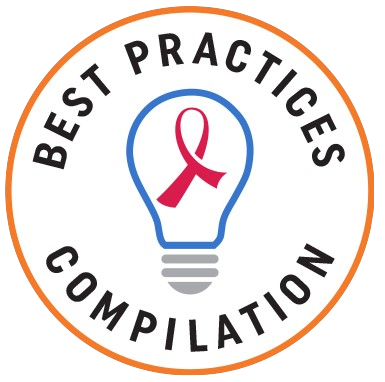An outpatient infectious disease clinic affiliated with the University of Kansas Medical Center aimed to increase viral suppression rates for people with HIV by packaging support services specific to each client in a Suppression Bundle. This nine-month program, implemented in 2018, tailored services by bundling three to five evidence-informed care strategies for each client, such as mental health referrals, transportation assistance, appointment reminders, and pill boxes. A primary care physician, case manager, and pharmacist coordinated with each client to address their specific needs. After the intervention, 70.1% of previously non-suppressed clients were virally suppressed.
Kansas City, KS
Given that patients may benefit from more than one intervention, the outpatient clinic implemented multiple tailored interventions simultaneously, in the form of a “Suppression Bundle”, derived from the concept of care bundles1 introduced by the Institute for Healthcare Improvement in 2001, with evidence that a bundle of three to five evidence-based interventions could lead to improved outcomes. The overall goal of Suppression Bundle was to increase the number of their clients who were virally suppressed.
“Non-suppression is multifactorial with key factors including retention in care and medication adherence.”
The Suppression Bundle’s emphasis on customization allowed service providers to create a bundle of care that met the specific needs of each client. The intervention care team, composed of the client’s HIV care provider, a pharmacist, and a case manager, met to discuss each client’s needs and identify three to five services that should make up the clients bundle of care. Members of the care team knew clients well and were motivated to support them in care engagement. They then met with clients to discuss which services they would like to receive.
Members of the care team could select from a range of services to bundle to address food insecurity, transportation barriers, substance use, mental health issues, and medication adherence. At the end of each appointment, the client would receive an after-visit summary with follow-up activities and resources. Services included:
- Referrals to food pantries and the provision of groceries
- Cab and bus vouchers
- Resources and referrals to substance use and mental health services
- Adherence support, such as pill keychains, pill boxes, and HIV pharmacist review of medications
- Monthly MyChart (patient portal) messaging, phone calls, and appointment reminder alarms
Clients and members of the care team collaborated to find the best and most effective bundled services for each client.
Sixty-five clients who were not virally suppressed participated in the intervention; 36 had a mental health diagnosis. Post-intervention, 46 clients were virally suppressed, a statistically significant increase.
| Category | Information |
|---|---|
| Evaluation data |
|
| Measures |
|
| Results |
* statistically significant |
Source: Poplin V, Katz J, Herrman M, et al. Effectiveness of a "Suppression Bundle" to improve HIV virologic suppression in an outpatient infectious disease clinic: A pilot implementation study. AIDS Care. 2023;35(7):1064-1068
- Intervention model. The Institute for Health Care Improvement began promoting the Suppression Bundle in 2001 based on evidence of effectiveness. The model addresses the complexity of client needs by allowing providers to select multiple services per client tailored to their specific barriers.
- Identification of client barriers. University of Kansas Medical Center staff reviewed aggregate information on clients who were not virally suppressed, including demographics, drug use, mental health diagnoses, and more, to identify barriers that would need to be addressed through the bundled services. This process allowed them to identify potential services to include in the bundle.
- Pre-implementation program assessment. Prior to launching Suppression Bundle, staff identified potential obstacles to implementation using the Consolidated Framework for Implementation Research.2 They found that the Suppression Bundle method could be easily adapted to fit the clinic’s service delivery model, and that the clinic had a culture favorable to implementation since staff were receptive to the model and its goals.
- Several clients requested phone call reminders but did not pick up multiple calls. In some cases, staff were not able to leave voicemails for those who did not answer. Because of this, University of Kansas Medical Center staff recognized the importance of considering each client’s personal preference for communication and having alternate methods available.
- A survey of staff perceptions on the impact and implementation of Suppression Bundle was not taken post-intervention. University of Kansas Medical Center staff felt this information would be beneficial to identify lessons learned for replicating the intervention.
- University of Kansas Medical Center had inadequate resources to provide services for clients with mental health and substance use diagnoses.
- Lavallee JF, Gray TA, Dumville J, Russell W, Cullum N. The effects of care bundles on patient outcomes: A systematic review and meta-analysis. Implementation Science. 2017; 12(1); 142. doi.org/10.1186/s13012-017- 0670-0
- Damschroder LJ, Reardon CM, Widerquist MAO, Lowery J. The updated Consolidated Framework for Implementation Research based on user feedback. Implement Sci. 2022;17(1):75. Published 2022 Oct 29. doi:10.1186/s13012-022-01245-0

